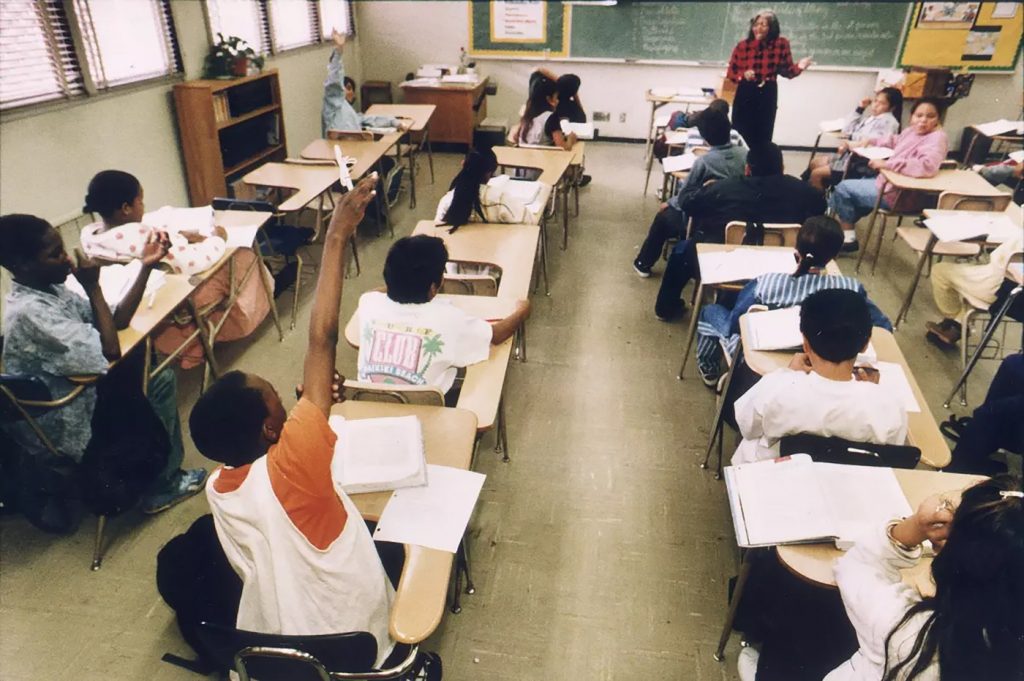Schools have generally been working hard to meet the special educational needs of an array of students — those with learning disabilities, those learning English, those with behavioral issues and those whose households struggle with poverty. But they have widely neglected one major group of students with special needs: the academically gifted.
Many school districts around the country have dropped programs for students who catch on quickly. The trend toward eliminating or scaling back such programs started about 15 years ago. But it picked up steam in 2021, when the Black Lives Matter movement made schools reckon with the discomfiting fact that they were far less likely to identify Black and Latino as gifted than they were white and Asian students.
Part of the problem was that the original purpose of gifted programs had been lost in parental competition for prestige and advantage. Unlike other special-education categories, the gifted label was coveted by parents. Classes and sometimes entire schools for gifted students often had richer curricula and more resources. They became classrooms for high achievers rather than for students properly defined as gifted.
These programs were originally meant to meet the needs of students with intense, often irregular learning patterns. They used to be seen as not needing special attention because they often excelled. As standardized testing required schools to aim for student proficiency, all the focus went to those who hadn’t met that mark. Those who exceeded it were deemed to be just fine.
But they’re not just fine. Gifted children, more than others, tend to shine in certain ways and struggle in others, a phenomenon known as asynchronous development. A third-grader’s reading skills might be at 11th-grade level while her social skills are more like a kindergartner’s. They often find it hard to connect with other children. They also are in danger of being turned off by school because the lessons move slowly.
Hit-or-miss efforts
I don’t know whether I would have been identified as gifted when I was a kid, but I certainly was bored out of my mind in elementary school. It felt as though everything was repeated to the point that paying attention in class was worthless. I started acting up simply to keep myself occupied.
My third-grade teacher tried a few strategies, including sending me on errands invented just to get me out of the classroom. Nothing worked. So they sent me on to fourth grade even though school policy prohibited it.
That was a disaster. I was cut off from my friends and anxious about constant grilling from adults and children asking why I was in the higher grade. It didn’t work academically, either. I enjoyed the challenge of catching up, but once that happened, school was boring again. The problem wasn’t third-grade material; it was the pace of learning.
When I started covering education in the late 1970s, it was a pleasant surprise to see this need being addressed — though it was a little off-putting to hear a 10-year-old describe herself as a “mentally gifted minor” at a school board meeting. “MGM” was the name given to the programs, later rebranded “GATE,” for Gifted and Talented Education.
It was never clear exactly what gifted education was, though. In some districts, it amounted to highly sought-after schools devoted to high achievers. Sometimes it was enrichment for certain students. Teachers were supposed to have special training, as any special-ed teacher would, but it seemed hit-or-miss. In the schools my kids attended, the gifted program basically meant extra homework.
What’s in a name
When giftedness became a matter of prestige rather than a particular learning style and need, all bets were off. Maybe the problem was calling it “gifted” instead of “asynchronous development”; no one’s going to fight to get their kid into an asynchronous development program unless they need it.
There’s little doubt that racism played a role in identifying children as gifted even though the label was based on supposedly objective criteria. But the solution to that problem is to eliminate biases, not the programs themselves.
California doesn’t require schools to offer gifted programs and stopped funding them in 2013, so schools have little incentive to keep them. The answer certainly isn’t eliminating the programs entirely. It doesn’t seem to have helped to open them to all children either; that led some to slow down the pace, defeating their purpose.
Related Articles
The FAFSA is now open. Submit ASAP to get money for college
New school data raises concerns among California education experts about pandemic recovery
Complaints up, savings down as fallout from school district’s $50 million energy contract continues
Some California teachers are cursing Donald Trump in the classroom. Is it their right?
Marin County school employee sues over racial video
Differentiated instruction — in which a teacher tailors lessons to varying student needs — sounds good but is difficult to carry off in a large class.
My eldest child had the good fortune to be in a small program within her public school, open to all until the spaces were filled, that solved much of the differentiation problem. It involved few tests and many individual projects. Students chose their own books to read and report on. Their projects could be written reports or, if their talents lay elsewhere, movies, plays, songs or board games — as long as they showed they had learned the lesson at hand. It gave students free rein to work at their own level, avoid boredom and show off their talents.
But that program was run by two extremely gifted teachers who knew how to bring out the best in each student. It’s much easier to grade a test than to evaluate a project, and I don’t know how widely the program could be replicated. In any case, it no longer exists.
Karin Klein is the author of “Rethinking College: A Guide to Thriving Without a Degree.” ©2024 Los Angeles Times. Distributed by Tribune Content Agency.


